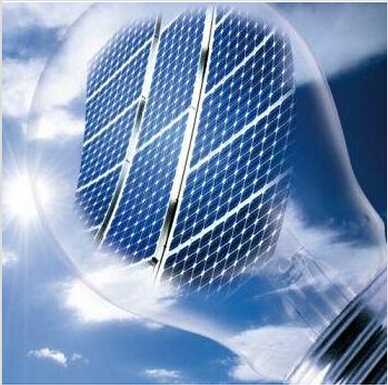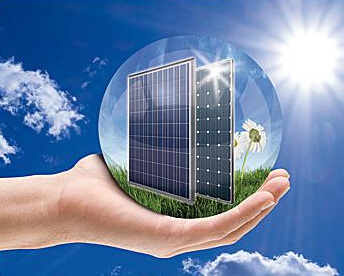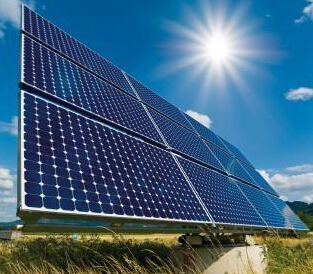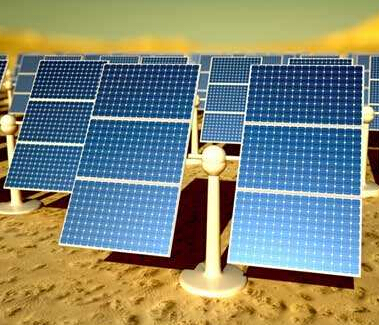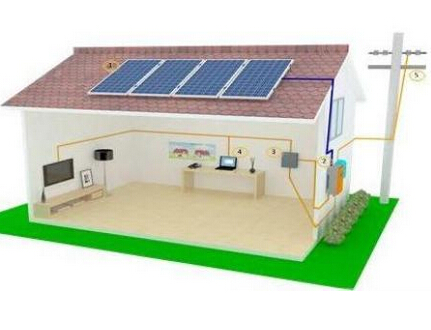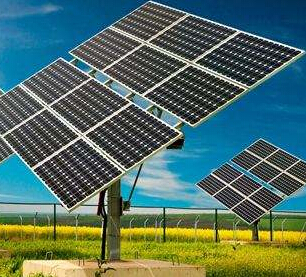I. Risk analysis of photovoltaic power stations
Most of the facilities of photovoltaic power plants are open-air. During the whole life cycle, the construction period and operation period are the two most critical phases. The full life cycle of photovoltaic power stations refers to the preliminary survey, design, equipment production, transportation, and power station of the power station. Construction, operation and retirement.
As two stages in which the insurer can participate, all relevant parties need to understand and master the risk status of the PV power plant construction period and operation period, and effectively evade and transfer the property risks.
(1) Construction period
The construction period of photovoltaic power station has the characteristics of short construction period, tight construction and wide working surface. It is prone to accidents such as storms, heavy rains, floods, mudslides, lightning strikes, snowstorms and fires during the construction phase, which are mainly divided into natural disasters and accidents. . In addition, the site selection is generally a barren mountain wasteland, abandoned fish ponds, desert tidal flats and other areas with complex and remote terrain. It is difficult to manage and the risk of accidental injury is also required. The main risk factors are briefly introduced and analyzed below.
storm

Strong winds/storms are one of the biggest risk factors during the construction period. During the installation of PV modules, the fixed connection between the components and the brackets has not yet reached the required design strength or there are potential construction defects. If the weather changes at this stage coincides with a storm or a typhoon disaster in the coastal area, the large-area battery panel of the photovoltaic power station may be blown off and picked up, and the components may be seriously damaged due to direct collision and extrusion, and the deformation of the bracket may be damaged. In addition, due to the regional and regular characteristics of strong wind disasters, generally the amount of equipment input increases with the equipment in the later stage of construction, which may cause large-scale property losses.
Therefore, the construction party should strictly control the installation progress and work quality of the panel during the construction period of the photovoltaic power station to avoid damage caused by strong winds and storms due to installation errors. For the insurer, it is also necessary to carefully assess the regional wind disaster risk and the construction party's schedule and set appropriate underwriting conditions.
Rainstorm/flood
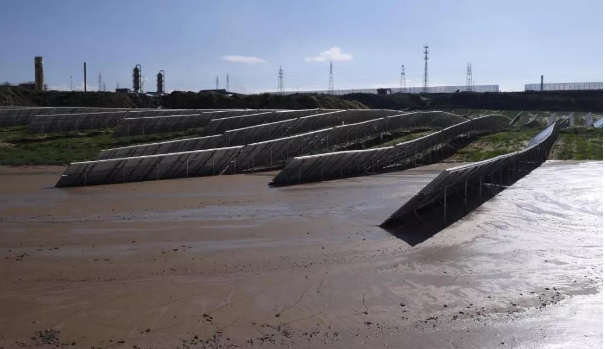
Heavy rain is a kind of severe weather. The heavy rainfall with a 24-hour precipitation of 50 mm or more is called “storm”. Long-term heavy rain is prone to water accumulation or runoff flooding low-lying areas, causing flood disasters and serious soil erosion. Significant economic losses such as engineering losses, dykes and flooding of crops. During the construction phase of the photovoltaic power station, heavy rain may cause damage to the infrastructure (roads and support foundations) under construction in the power station. The flooding caused by the flooding may cause damage to the subsidence and scouring, storage facilities and facilities of the planting area (battery panel, confluence) Box, inverter electrical equipment). During the construction phase, flood control measures should be taken in advance to place high-value, vulnerable equipment and facilities at high altitudes to avoid damage during heavy rains.
Lightning strike
Rainstorm/flood
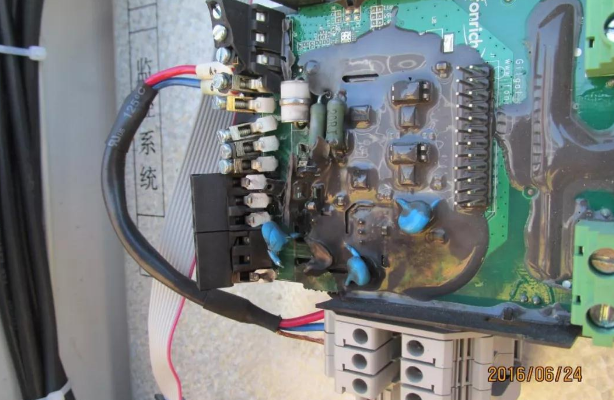
Lightning strike is a common natural disaster. It is divided into three types: direct lightning strike, inductive lightning and spherical lightning. The direct lightning strike has the characteristics of high voltage, high temperature and rapid discharge, which can directly cause serious damage to contact objects, buildings and equipment. Ray's powerful pulse current can cause over-voltage on the surrounding wires or metal objects to cause flashing. If there is no effective lightning protection measures in buildings or equipment, it can cause serious damage to electrical components and circuit boards. The lightning protection facilities of photovoltaic power stations during the construction period are still not perfect. Thunderstorms can easily cause damage to electrical equipment and facilities. Lightning strikes are a common risk factor in the construction period of photovoltaic power plants. The completion of the main construction should be completed or the lightning protection should be completed in advance. The construction of safety facilities to avoid major property damage caused by lightning strikes.
Blizzard

Snow disasters are natural phenomena that cause large-scale snow accumulation and long-term snowfall, and are common natural disasters in the north. In recent years, due to the anomalous circulation of the atmosphere, there have been blizzard disasters in southern China. The solar photovoltaic modules have a large area and will accumulate in heavy snowfall. If they are not removed, the components and brackets cannot support the weight of the snow when accumulated to a certain weight, which will result in deformation and collapse of the components and brackets, such as snowstorms. May cause damage to large-area components and brackets.
Fire
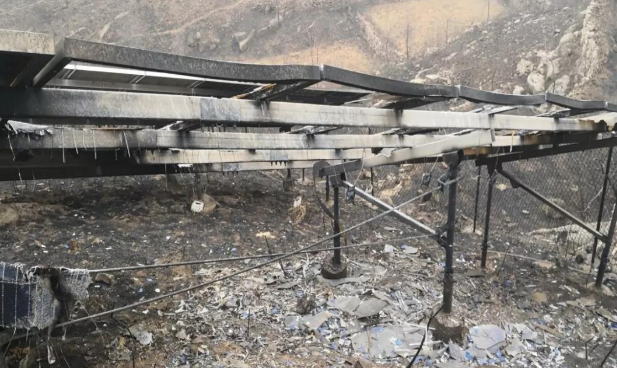
There are many combustible materials on the construction site of photovoltaic power station, such as temporary buildings and facilities, such as flammable materials such as rafts, low fire resistance, packaging of solar panels (polystyrene foam board, polyurethane soft sponge, etc.) Combustible and flammable materials used in paints, plastic products, decoration and decoration. Use and storage of these items can cause fire if exposed to open flames or high temperatures. In the installation stage of photovoltaic modules and brackets, metal cutting, welding operations, artificial smoking and other open flames may cause the above-mentioned combustibles to ignite, while cutting and welding operations use industrial gases (acetylene gas and oxygen), these industrial gases are high pressure Bottled, easy to leak, fire, explosion. In the construction process of photovoltaic power station, it is necessary to establish a strict safety management system and fire prevention system, and be equipped with full-time safety and firefighting personnel to carry out regular inspections on the construction site. At the same time, the construction site is equipped with effective fire-fighting facilities, and the fire can be rescued in time. In order to avoid the occurrence of fire and reduce the property damage when the fire occurs.
(II) Operation period
After the completed photovoltaic power station is officially put into operation, similar to the construction period, the photovoltaic power station will still be damaged by natural disasters such as storms, blizzards, lightning strikes, heavy rains, floods, etc. At the same time, mechanical damage and electrical accidents occur in the completed power station. The possibility of accidents such as technical risks and human risks has increased. Therefore, we will introduce and analyze the following major risk factors for the operational period risks.
Electrical fault
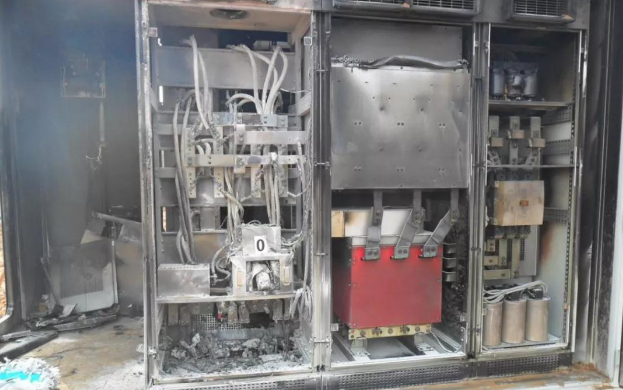
In the operation process of photovoltaic power stations, electrical accidents are more common, such as short circuit, over voltage, over current, etc., which may cause damage to the junction box of the photovoltaic module, burnout of the combiner box, damage of the inverter, and the like. In addition to direct equipment losses, due to major power generation equipment failures, such as centralized inverters, box changes, power lines, main transformers and other equipment failures, it may also cause a large-scale shutdown of the entire plant or photovoltaic district.
theft
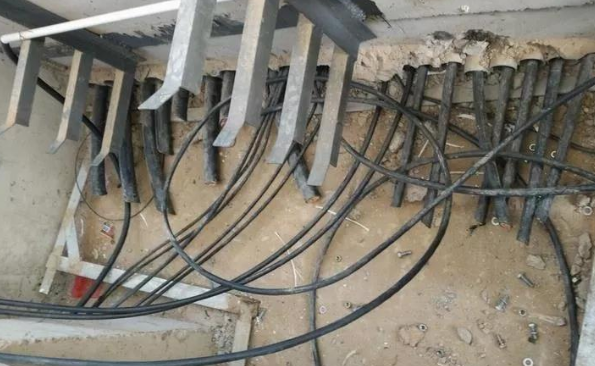
Due to the large area of the photovoltaic power station, there are blind spots in the daily inspections, especially in the unattended or small-duty power station, which is prone to theft. In the case of the author's case, there were accidents such as PV modules and photovoltaic cables during the operation period, causing property damage to the power station and causing loss of power generation.
According to the summary of insurance claims operation data for many years, the overall introduction of risk factors for PV power plant operation period is shown in the following figure:
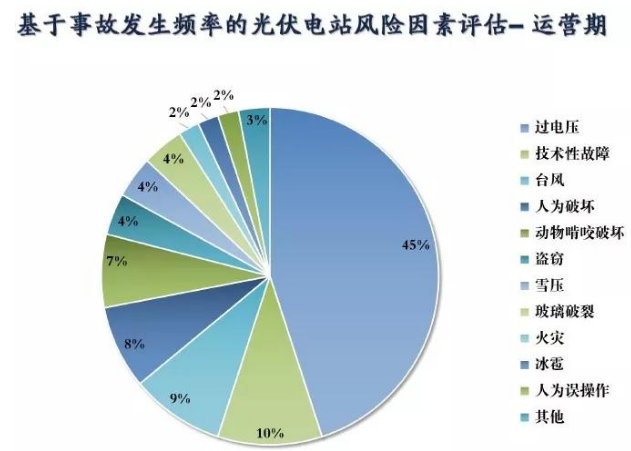
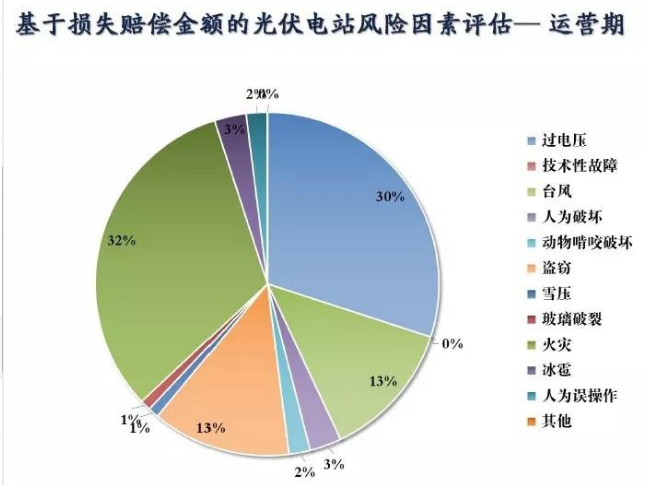
Second, the photovoltaic power plant package risk solution introduction
How to effectively manage the risks faced by photovoltaic power plants and reduce the probability of losses and occurrences is an important task for the owners, constructors and operators. There are many risk management tools, and in terms of risk transfer, the most common practice at present is to purchase insurance and use visible costs to protect future unknowns. As mentioned above, the risk factors faced by PV power plants during the construction period and operation period are common and different, and different insurance products are needed to ensure the corresponding risks. In addition, PV power plants still have some special risks to be protected, such as power generation loss risk, component quality risk, etc. Therefore, in the following content, a package risk solution will be briefly introduced.
(1) Construction period
The most widely used insurance protection products during the construction period are as follows:
Construction and installation engineering all risks and third party liability insurance. Guarantee the direct material loss caused by natural disasters or accidents during the construction of photovoltaic power stations, as well as the third party's property loss and personal injury caused by accidents.
Employer liability insurance / construction personnel group accident insurance. It guarantees the death, disability and medical expenses incurred in the treatment of personal injury accidents during the construction process.
Cargo transportation insurance. Guarantee the direct material loss caused by natural disasters or accidents during transportation of materials and equipment.
The above three basic insurance products are commonly used in PV power plant projects during the construction period, but as more and more companies go global, based on the requirements of foreign owners/financing parties, we are also seeing more and more during the construction period. The more purchases are as follows to protect against financial losses.
Delayed completion insurance for all risks of construction and installation works. Guarantee the loss of underwriting due to all risks of the project, resulting in the expected loss of profits and the increase in costs caused by the delayed completion of the project.
Delayed completion insurance under cargo transportation insurance. Guarantee the loss of underwriting caused by the cargo transportation insurance, resulting in the expected loss of profits and the increase in costs caused by the delayed completion of the project.
Professional liability insurance. The protection contractor shall be responsible for the losses caused by professional negligence during the construction of the project.
(2) Operation period
The risk protection of PV power plant operation period, the current best practice on the market is comprehensive insurance during the operation period, including property all insurance, machine damage insurance, business interruption insurance, solar power generation capacity guarantee insurance, solar radiation index insurance, 25 years solar photovoltaic Component quality and power compensation guarantee insurance.
Property all risks / machine damage insurance. Underwriting direct property losses caused by natural disasters, accidents or human operations during the operation period of photovoltaic power plants.
Business interruption insurance / profit loss insurance. Due to the risk of the main insurance underwriting, the material property used in the operation of the power station suffers losses, resulting in interruption of operations, resulting in an increase in profit loss and operating expenses during the compensation period.
Solar power station power generation guarantee insurance. When the actual power generation caused by the responsibility of the photovoltaic power station is less than the estimated power generation indicated in the insurance policy, the insurer shall be responsible for compensation according to the provisions of this insurance contract.
Compensation calculation formula: compensation amount = (estimated power generation of insured solar power station during insurance period - actual power generation of insured solar power station during insurance period) × agreed on-grid electricity price
Solar radiation index insurance. To protect the under-supplied solar power station, the solar radiation is reduced due to insufficient solar radiation during the insurance period, and the insurer shall be liable for compensation according to the contract of the insurance contract. The loss of on-grid electricity is calculated as the difference between the solar radiation generation index and the trigger point. The definition of the solar radiation power generation index and the trigger point is stated in the insurance policy.
Underwriting formula: Solar radiation power generation index = Expected power generation + (actual peak sunshine hours - Expected peak sunshine hours)
Number) x installed capacity x system conversion efficiency x component efficiency attenuation coefficient
Claim calculation formula: Indemnity = (starting point - solar radiation power generation index) x1000 yuan / MWh
Solar Radiation Generation Index = Expected Power Generation MWh + (Actual Peak Sunshine Hours - Expected
Peak sunshine hours) x installed capacity x system conversion efficiency x component efficiency attenuation factor
25 years of solar photovoltaic module quality and power compensation guarantee insurance
The 25-year solar PV module quality and power compensation guarantee insurance is insured by the component manufacturers. The insurance company provides 10 years of quality assurance and 25 years of power compensation.
The insurer shall compensate the insurer for the following reasons, causing the insured to assume responsibility for repair, replacement or return under the Limited Warranty, or for compensation for the difference between the committed power generation and the actual power generation:
Raw material defect
2. Manufacturing defects, poor craftsmanship
3. Raw material aging
And the cost of identification, transportation and transportation related to repair, replacement, or return.
Conclusion
Based on the risk characteristics of photovoltaic power plants, the corresponding insurance products have been relatively complete. As the owner, construction, operator, and funder of the power station, appropriate insurance products should be adopted according to their own risk protection needs. As an insurer, different levels of protection should be designed according to the needs of customers to meet the different needs of all parties.
















 RCCN WeChat QrCode
RCCN WeChat QrCode Mobile WebSite
Mobile WebSite